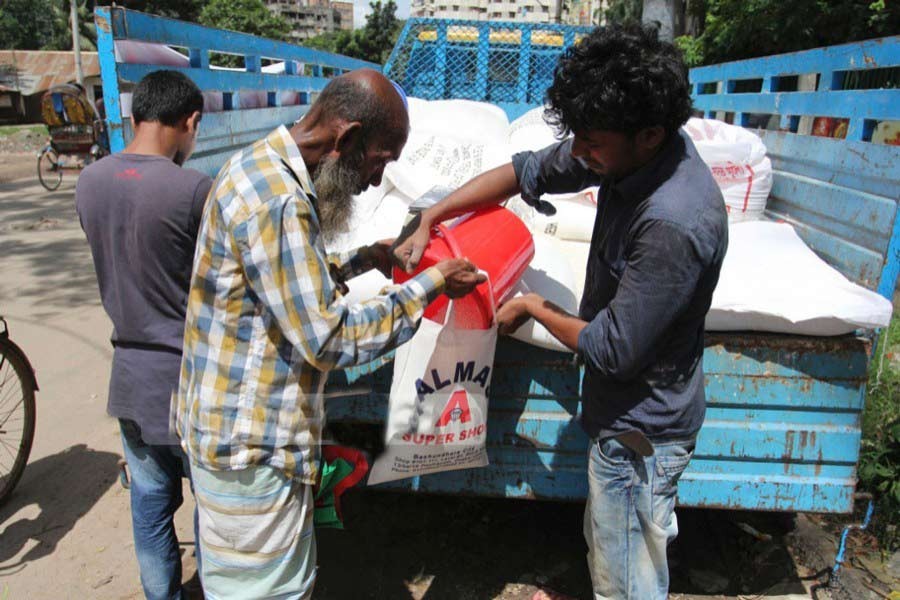Amid allegations over mismanagement including thefts and malpractices among a section of those involved in the operation of Open Market Sale (OMS), the government while postponing the operation has initiated a move to issue ration cards for lower-income people in select districts, as a starter. Apparently, this appears to be a better mechanism provided it too does not run into untoward snags. Issuing ration cards entails bringing 5.0 million poor people in urban and rural areas under the programme allowing them to buy rice at Tk 10 per kg, as announced by the Prime Minister early this week. This, the PM said, is in addition to the 5.0 million extreme poor, mostly in rural areas, who are currently availing themselves of the subsidised facility. Though the authorities did not overtly mention malpractice as the main reason for postponement of the OMS scheme, attributing it to problems in distribution, it is clear from reports in the media that the mechanism dependent largely on the OMS dealers lacked required supervision from relevant authorities including local public representatives and the administration.
Now that the decision for an additional 5.0 million cards has been taken, the important thing is the enlisting of people who need the subsidised facility most. The districts that have been identified for succour are Dhaka, Narayanganj, Munshiganj, Narsingdi, Faridpur, Rajbari, Shariatpur, Madaripur and Gopalganj. Instructions have reportedly been sent to form relief committees up to ward level to identify distressed people. Under the programme, rice will be sold to those having cards in presence of officials from the local administration, law enforcers and local public representatives. Law enforcers will also ensure that people buy rice maintaining physical distance to contain coronavirus transmission. Only those who are not getting support from the food safety schemes will be included under this new initiative. It has been learnt that card holders will be able to buy monthly 20kg rice at Tk 10. And only one person from a family will be entitled to get the card. A card holder will be allowed to buy 5.0 kg rice at a time. A food ministry circular said lower-income groups should mainly comprise day labourers, rickshaw-pullers, people from hijra (third gender) communities, industrial labourers, small traders like tea-stall owners.
As for the available stock of rice to run the programme, reports say two tonnes of rice for a district town and three tonnes for metropolitan cities will be allocated each day. Food ministry sources have informed the media that 50 thousand tonnes of rice have been allocated so far for the programme. Observers believe that to ensure that the programme runs smoothly and beneficially, more districts need to be added to the already selected eight, and to do so, there is a need to enhance the allocated quantity of rice.
Clearly, the new initiative will try to correct some of the wrongs that led to the suspension of OMS operation. No doubt, the critical job now would be to identify the most distressed people who can avail themselves of the benefit.


